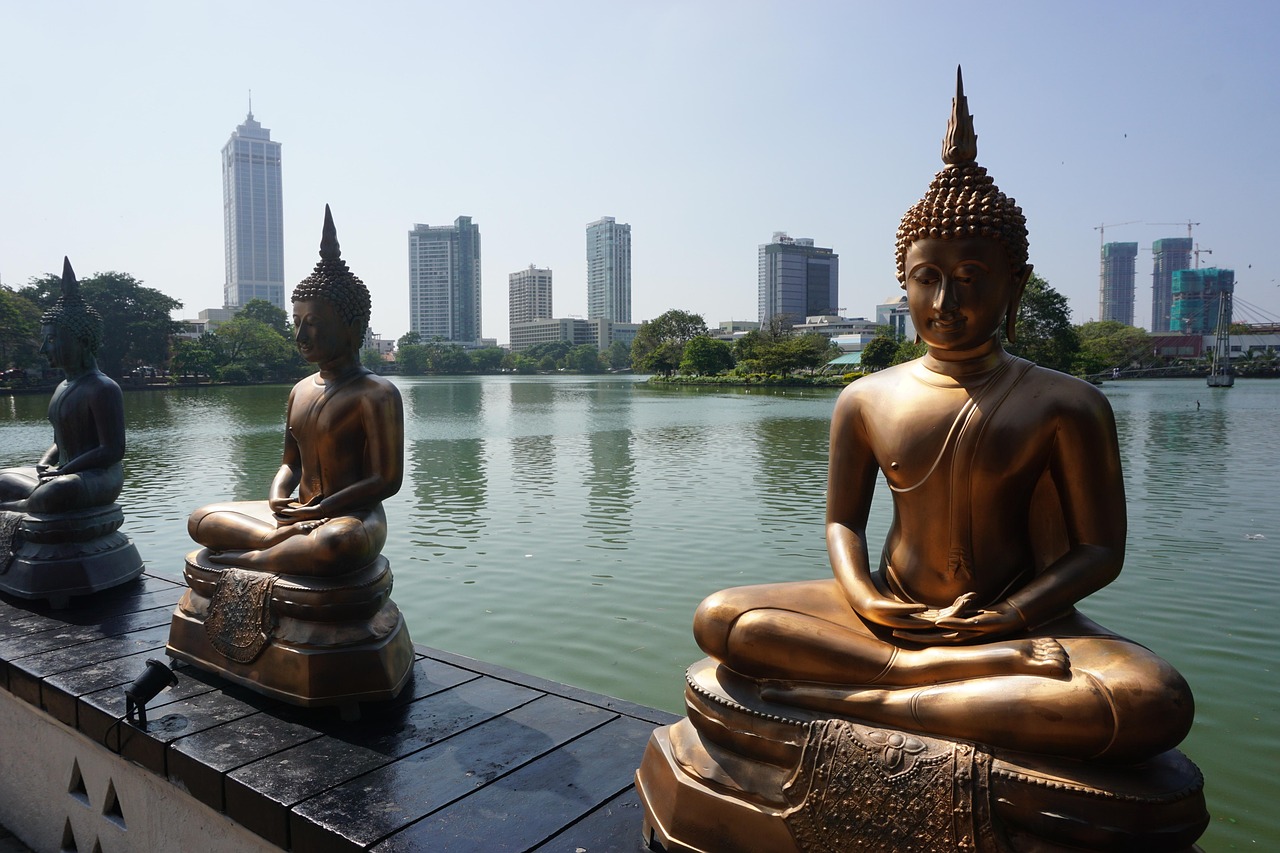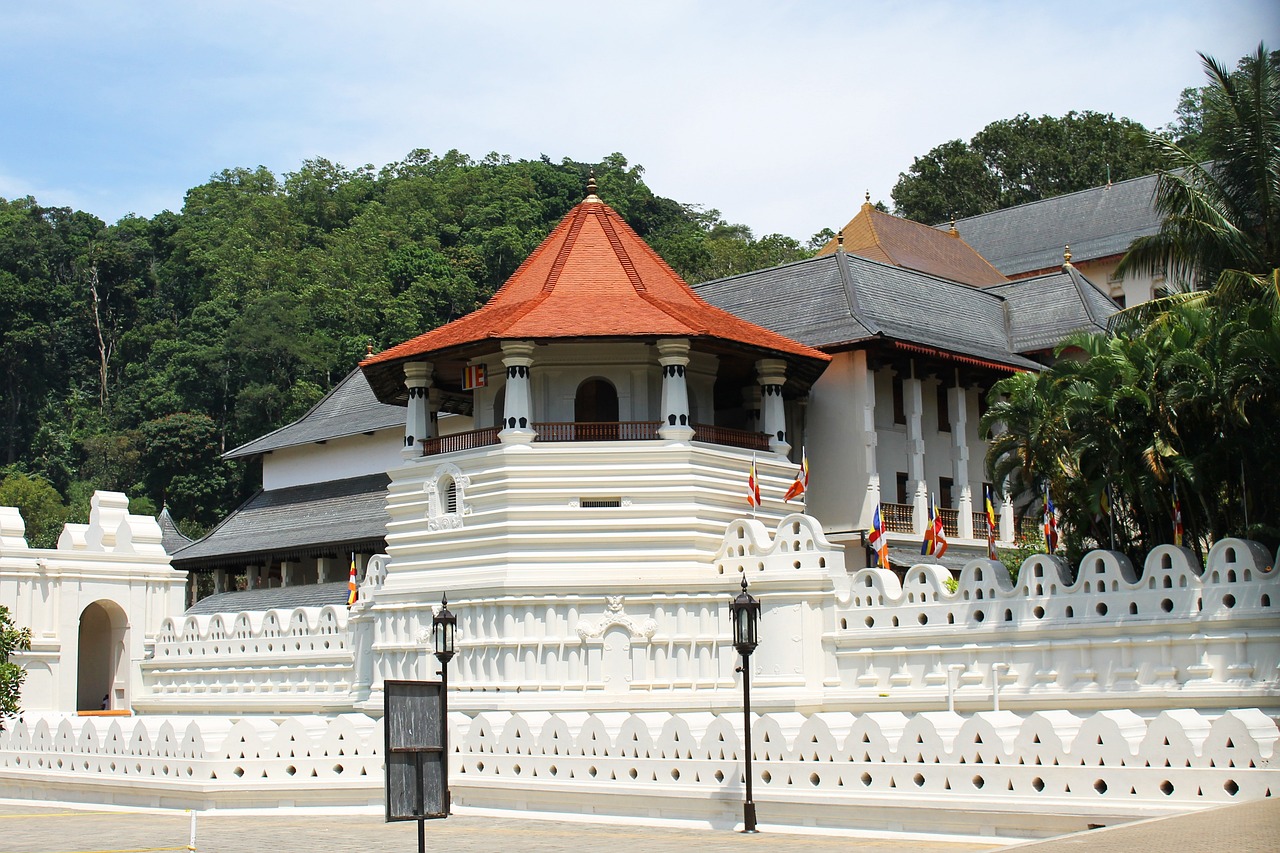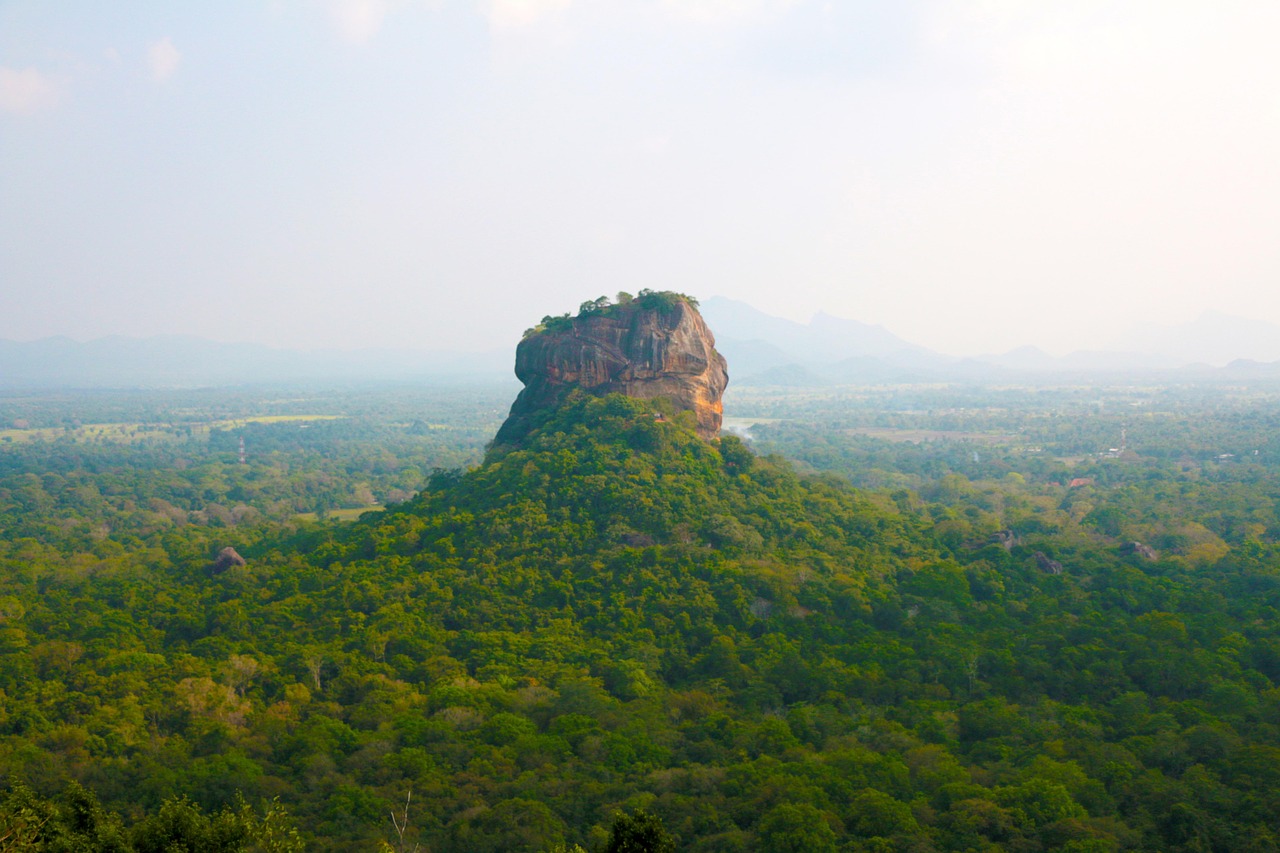Nestled on the western coast of Sri Lanka, Colombo stands as a vibrant testament to the island nation’s rich history, cultural diversity, and evolving identity. As the commercial capital and largest city of Sri Lanka, Colombo has transformed from a small seaport to a bustling metropolis that seamlessly blends colonial heritage with modern development. This coastal gem serves as both the gateway to Sri Lanka and a destination in its own right, offering visitors a multifaceted experience that captures the essence of this South Asian paradise.
A Storied History
Colombo’s story begins over two millennia ago when it was known to ancient traders from Rome, Arabia, China, and various parts of Southeast Asia. The natural harbor made it an ideal trading post along the historic Silk Route. The name “Colombo” itself has multiple origin theories—some attribute it to the Sinhalese word “Kolon thota,” meaning “port on the Kelani River,” while others suggest it derives from the Portuguese adaptation of the Sinhalese name “Kola-amba-thota,” meaning “harbor with leafy mango trees.”
The city’s modern history was shaped significantly by colonial powers. The Portuguese arrived in the early 16th century, establishing control over the coastal areas and introducing Catholicism. By the mid-17th century, the Dutch East India Company had ousted the Portuguese and expanded the fortifications of Colombo. The Dutch period left indelible marks on the city’s architecture, legal system, and culture.
British colonization, beginning in 1796, brought the most dramatic changes to Colombo. Under British rule, the city was designated the capital of Ceylon (as Sri Lanka was then known) in 1815. The British transformed Colombo into a planned city with wide boulevards, colonial buildings, and modern infrastructure including railways, hospitals, and schools. They established the foundation for many of Colombo’s most recognizable districts and landmarks.
After gaining independence in 1948, Sri Lanka retained Colombo as its capital until 1982, when administrative functions were moved to Sri Jayawardenepura Kotte. Nevertheless, Colombo remained the commercial and cultural heart of the nation, continuing to evolve through periods of economic growth, civil conflict, and post-war development.
Geographic Character
Sprawling along the western coastline of Sri Lanka, Colombo enjoys a privileged position on the Indian Ocean. The city covers approximately 37 square kilometers and is situated in the Colombo District of the Western Province. Its tropical monsoon climate offers warm temperatures year-round, typically ranging from 26°C to 32°C (79°F to 90°F), with higher humidity levels during the monsoon seasons from May to August and October to January.
The topography of Colombo is predominantly flat, with the Kelani River marking its northeastern boundary. The cityscape features a mix of water bodies, including Beira Lake in the heart of the city, canals dating back to the Dutch era, and miles of seafront along the Indian Ocean. This coastal orientation has shaped Colombo’s identity as a maritime city and continues to influence its urban development.
The city’s natural setting is complemented by lush urban parks, most notably the Viharamahadevi Park (formerly Victoria Park), which provides a green oasis amid the urban density. Colombo’s western edge is defined by a continuous stretch of coastline featuring beaches, promenades, and the iconic Galle Face Green, a seaside urban park established by the British in 1859.
Cultural Mosaic
One of Colombo’s most distinctive features is its remarkable cultural diversity. The city serves as a microcosm of Sri Lanka’s multi-ethnic and multi-religious society. Sinhalese, Tamil, Muslim, and Burgher (descendants of European colonists) communities have all contributed to shaping the city’s cultural landscape. This diversity is reflected in the languages spoken (Sinhala, Tamil, and English are commonly heard), the variety of religious practices, and the architectural styles across different neighborhoods.
Religious landmarks dot the cityscape, each telling part of Colombo’s cultural story. Buddhist temples like Gangaramaya and Seema Malaka showcase Sri Lankan Buddhist traditions, while Hindu kovils such as the Old Kathiresan and New Kathiresan temples serve the Tamil community. The Jami Ul-Alfar Mosque (Red Mosque) with its distinctive red and white pattern and the historic Wolvendaal Church represent the Muslim and Christian heritages respectively.
Festivals bring this cultural diversity to vibrant life throughout the year. The Sinhala and Tamil New Year in April transforms the city with traditional games, sweets, and rituals. Vesak, commemorating Buddha’s birth, enlightenment, and passing, bathes Colombo in the light of countless lanterns and pandals (decorated structures depicting Buddhist stories). Ramadan and Eid celebrations enliven Muslim neighborhoods, while Christmas decorations adorn the city in December, particularly around colonial landmarks and churches.
The arts flourish in Colombo, from traditional forms to contemporary expressions. The Colombo National Museum houses ancient artifacts and royal regalia, while the Sapumal Foundation and Saskia Fernando Gallery showcase modern Sri Lankan art. Annual events like the Colombo Art Biennale and Colombo International Theatre Festival have positioned the city as an emerging arts hub in South Asia.
Architectural Landscape
Colombo’s skyline tells the story of its historical journey through a fascinating architectural palimpsest. Colonial-era buildings stand alongside ancient religious structures and ultramodern skyscrapers, creating a visually dynamic urban environment.
The Fort district, once literally a fortified area under Portuguese and Dutch rule, now serves as Colombo’s central business district. Here, grand colonial structures like the Old Parliament Building (now the Presidential Secretariat), the Old General Post Office, and the iconic Cargills Building showcase neoclassical and Victorian influences. The Lighthouse Clock Tower and the Central Point Building are prominent landmarks in this historic district.
Pettah, adjacent to Fort, presents a contrasting architectural scene with its maze-like streets lined with shops, markets, and religious buildings. The Khan Clock Tower, built in the early 20th century, marks the entrance to this vibrant commercial area. The Jami Ul-Alfar Mosque, with its striking red and white brick pattern, exemplifies Indo-Saracenic architecture.
As Colombo expanded south, colonial officials and wealthy merchants built mansions in areas like Cinnamon Gardens (Colombo 7), now one of the city’s most prestigious neighborhoods. Many of these properties have been repurposed as embassies, government offices, or upscale restaurants, preserving their colonial charm while adapting to contemporary needs.
Modern Colombo is increasingly defined by its growing collection of skyscrapers and contemporary structures. The Lotus Tower, standing at 356 meters, has become an iconic feature of Colombo’s skyline since its completion in 2019. The World Trade Center twin towers and the distinctive Altair building with its leaning design represent the city’s architectural ambitions. The Port City Colombo development, a massive land reclamation project, is set to further transform the city’s landscape with futuristic buildings and infrastructure.
Economic Dynamics
As Sri Lanka’s commercial capital, Colombo drives the nation’s economy and serves as its financial center. The Colombo Stock Exchange, established in 1985, represents the country’s active capital market. The Central Bank of Sri Lanka and headquarters of major local and international banks are located primarily in the Fort and Pettah areas.
The port of Colombo has been central to the city’s economic identity for centuries. Today, it ranks among the busiest ports in South Asia and serves as a key transshipment hub in the Indian Ocean. The expansion of port facilities through projects like the Colombo South Harbor has strengthened this maritime role.
Tourism forms a significant sector of Colombo’s economy, with the city serving as both a gateway to other Sri Lankan destinations and increasingly as a destination itself. Major international hotel chains operate alongside boutique accommodations, particularly along the Marine Drive and in the Fort area. The restaurant and retail sectors have expanded considerably to cater to both tourists and the growing urban middle class.
Information technology and business process outsourcing have emerged as important growth sectors, with numerous software companies and service centers establishing operations in Colombo. The government has supported this development through initiatives like the Colombo Port City Special Economic Zone, designed to attract international investors.
Traditional industries and crafts remain relevant in Colombo’s economic landscape. The manufacturing sector includes food processing, textiles, and consumer goods production. Pettah and other market areas continue to thrive as centers for wholesale and retail trade, connecting rural producers with urban consumers and export markets.
Culinary Delights
Colombo’s food scene reflects its cultural diversity and historical influences, offering visitors a tantalizing array of flavors. Sri Lankan cuisine forms the foundation, characterized by rice and curry meals featuring local spices, coconut milk, and fresh seafood.
Street food culture thrives in Colombo, particularly in areas like Pettah and Galle Face Green. Popular options include kottu roti (chopped flatbread stir-fried with spices and meat or vegetables), egg hoppers (bowl-shaped rice flour pancakes with an egg in the center), and isso wade (spicy lentil patties topped with tiny shrimp). The evening brings food carts selling grilled seafood, tropical fruits, and sweet treats like coconut ice cream.
Colonial influences have left their mark on Colombo’s culinary landscape. Dutch burghers contributed lamprais (rice and curries baked in banana leaves) and breudher (a rich, buttery cake). The British tea culture is evident in the popularity of evening tea and Western-style pastries. Portuguese and Malay influences can be found in dishes like bibikkan (a rich coconut cake) and various spiced meat preparations.
Contemporary Colombo offers sophisticated dining experiences that reimagine traditional flavors. Restaurants like Ministry of Crab (located in the historic Dutch Hospital Shopping Precinct) and Nihonbashi have earned international recognition for their innovative approaches to Sri Lankan seafood. A growing café culture has emerged, particularly in areas like Colombo 7, where specialty coffee and fusion dishes cater to cosmopolitan tastes.
Urban Challenges and Transformations
Like many rapidly developing cities in South Asia, Colombo faces significant urban challenges. Traffic congestion has become increasingly problematic as vehicle ownership has grown faster than road infrastructure. The government has responded with projects like the Marine Drive extension and elevated highways, though public transportation improvements remain crucial for sustainable mobility.
Environmental concerns include maintaining urban green spaces, managing waste effectively, and protecting the coastline from erosion and pollution. Climate change adaptation has become increasingly important, with Colombo vulnerable to flooding during heavy monsoon rains. Projects to restore urban wetlands and improve drainage systems are addressing these challenges.
Housing affordability presents another challenge, particularly for lower-income residents. Efforts to improve informal settlements have included both upgrading programs and controversial relocations to high-rise housing units. Urban planners continue to grapple with balancing development needs with social equity concerns.
The ambitious Port City Colombo project represents the most dramatic urban transformation currently underway. This Chinese-backed development involves reclaiming 269 hectares of land from the sea to create a new cityscape of commercial, residential, and recreational spaces. Proponents highlight economic opportunities and world-class infrastructure, while critics raise concerns about environmental impacts, sovereignty questions, and potential exclusivity.
Vibrant City Life
Colombo’s residents embrace a lifestyle that balances tradition with contemporary urban energy. Mornings often begin early, with joggers and walkers taking advantage of cooler temperatures along Galle Face Green or Viharamahadevi Park. Office workers fill the streets of Fort and Pettah districts, while vendors set up for the day’s business in the markets.
Shopping options range from the sensory overload of Pettah Market to upscale malls like Colombo City Centre and One Galle Face. Traditional markets like Manning Market offer fresh produce, while specialty stores in areas like Bambalapitiya cater to specific cultural communities. The growing middle class has fueled demand for international brands, which are increasingly available alongside local products.
Colombo’s nightlife has evolved considerably in recent years. Rooftop bars with stunning ocean views, microbreweries, and clubs featuring both international and local music have created a diverse after-dark scene. Cultural performances of traditional dance and music can be enjoyed at venues like the Nelum Pokuna Mahinda Rajapaksa Theatre, while international acts occasionally perform at larger venues.
Sports play an important role in Colombo’s social life, with cricket holding a special place in the city’s heart. The R. Premadasa Stadium hosts international cricket matches that bring the city together in passionate support of the national team. Rugby, soccer, and basketball also enjoy popularity among different communities.
Conclusion
Colombo defies simple categorization. It is a city of contrasts and harmonies—where ancient temples stand in the shadow of glass skyscrapers, where traditional street food vendors operate alongside international restaurants, and where multiple languages, religions, and cultural traditions coexist and intertwine. As Sri Lanka continues its journey of post-conflict development and economic growth, Colombo stands at the forefront of change while maintaining connections to its rich heritage.
For visitors, Colombo offers far more than a mere stopover on the way to Sri Lanka’s beaches and ancient sites. It presents an opportunity to understand the complex tapestry of Sri Lankan identity through its architecture, cuisine, festivals, and daily rhythms. Whether wandering through colonial-era streets, sampling spicy street food, watching the sunset from Galle Face Green, or exploring bustling markets, travelers will discover that Colombo’s charms run deep and reward those who take time to explore this multifaceted city—truly a pearl of the Indian Ocean.
Submit your review | |


